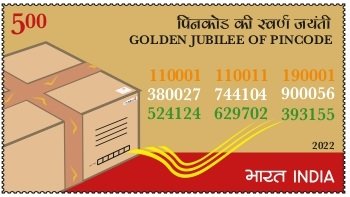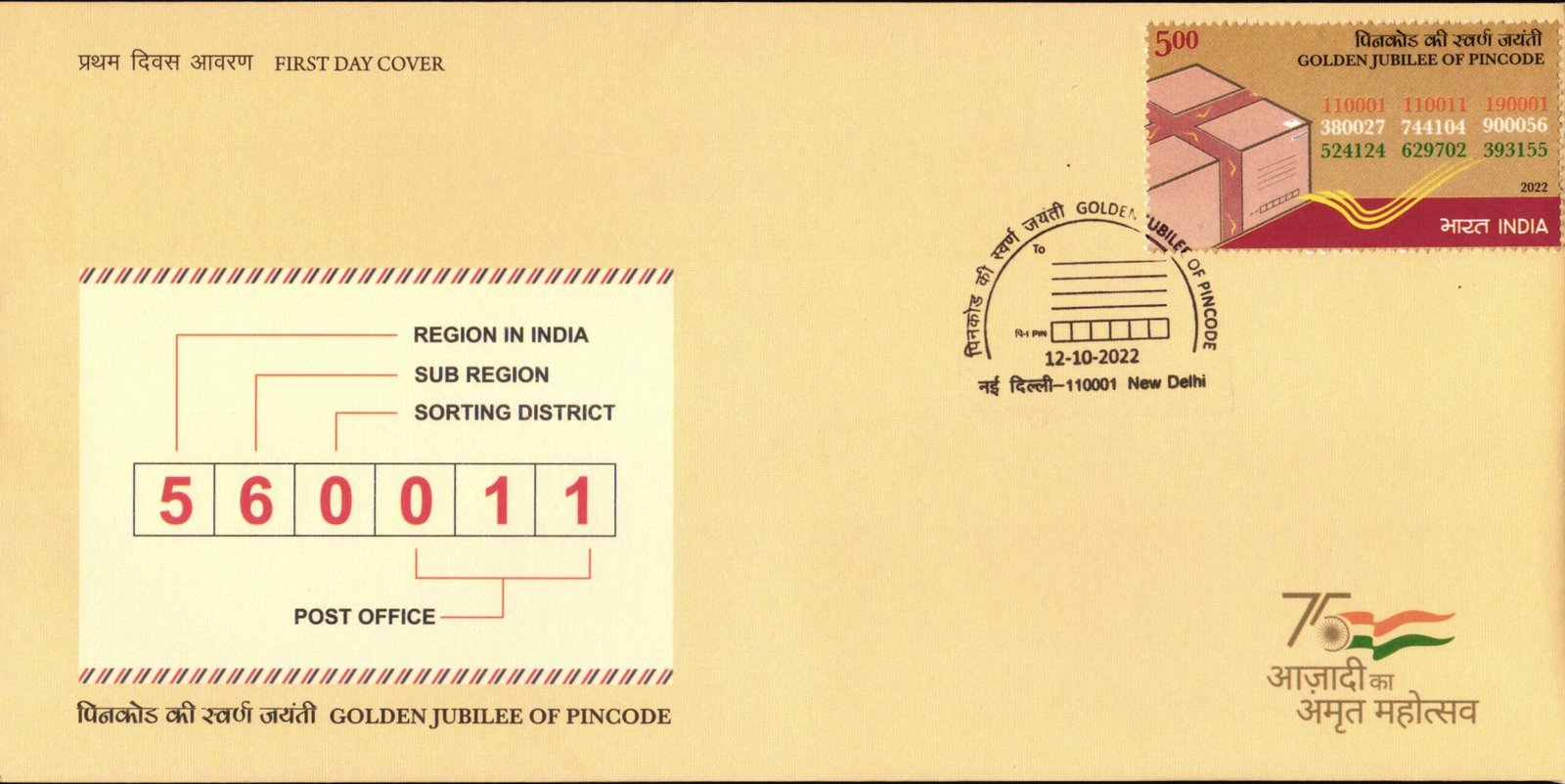Golden Jubilee of Pincode

Technical Data
| Date of Issue | October 12, 2022 |
|---|---|
| Denomination | Rs. 5 |
| Quantity | 201,600 |
| Perforation | comb 13½ |
| Printer | Security Printing Press, Hyderabad |
| Printing Process | Wet Offset |
| Watermark | No Watermark |
| Colors | Multicolor |
| Credit (Designed By) | Ms. Nenu Gupta |
| Catalog Codes |
Yvert et Tellier IN 3500 Stanley Gibbons IN 3825 Michel IN 3824 |
| Themes | Anniversaries and Jubilees | Postal Services |
Pincode Commemorative Postage Stamp – 50 Years of Simplifying India’s Mail Delivery
India Post issued a commemorative postage stamp to celebrate 50 years of the Pincode system in India, a remarkable innovation that revolutionized mail delivery across the country. Introduced on 15 August 1972, the Postal Index Number (PIN) has since become an integral part of everyday life—making communication faster, more reliable, and more accurate.
The Challenge of Mail Delivery Before PIN Codes
With 1.59 lakh post offices spread across 32.87 lakh sq. km and over 25 crore households to serve, ensuring timely mail delivery in India has always been a challenging task. Before the introduction of Pincodes, postal officials had to memorize countless sorting patterns, and reading addresses was time-consuming. This often delayed sorting, routing, and delivery of mail, particularly to remote or lesser-known towns and villages.
The Birth of the Pincode System
To overcome these challenges, India introduced the Pincode system on 15 August 1972. The Pincode is a six-digit code that simplifies and systematizes mail sorting and delivery:
- The first digit identifies the broad postal region.
- The first two digits indicate the postal circle or sub-region.
- The third digit represents the sorting district.
- The last three digits pinpoint the exact delivery post office.
India is divided into nine PIN regions, each with its own postal network. Every Pincode is mapped to a delivery post office, which may be a General Post Office (GPO), Head Office (HO), or Sub-Office (SO), ensuring seamless mail movement even in the remotest parts of the country.
Impact of the Pincode
The introduction of the Pincode brought speed, accuracy, and reliability to India’s postal system. It eliminated confusion caused by similar place names, language variations, or incomplete addresses. For businesses and bulk mail users, it simplified sorting and distribution, reducing delays in long-distance mail transmission.
Over time, the role of the Pincode has extended far beyond postal services:
- Banking: The MICR code used by banks is based on the Pincode system.
- Digital Governance: Platforms like CoWIN used Pincodes to help citizens locate vaccination centres during the COVID-19 campaign.
- Economic Planning: Businesses use Pincode-based classification for sales, distribution, and logistics strategies.
Today, the Pincode has become a national asset, serving as a ready-made geographical classification system and contributing significantly to India’s socio-economic development.
Modernization and Citizen Services
India Post has modernized its mail operations with computerized sorting and automated machines, where Pincodes are essential for efficient processing. To help citizens, an online Pincode Finder Tool is available on the India Post website, allowing users to search for Pincodes by locality, district, or post office name.
The Philatelic Tribute
On the golden jubilee of the Pincode system, India Post proudly released the Pincode commemorative postage stamp, celebrating half a century of seamless service to the nation. For philatelists, the 50 years of Pincode stamp is not just a collector’s item but also a tribute to one of the simplest yet most powerful innovations in India’s postal history.
First Day Cover

